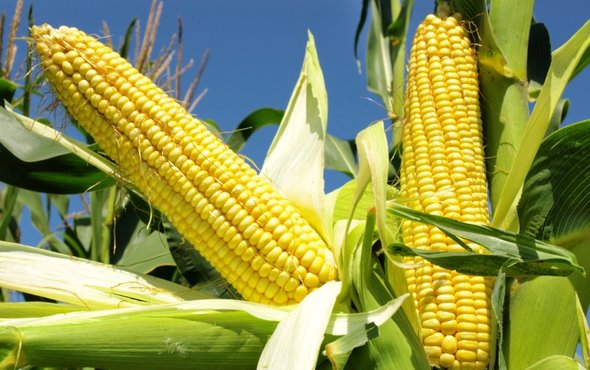(单词翻译:单击)
听力文本
This is Scientific American — 60-Second Science. I'm Steve Mirsky.
"Photosynthesis is surprisingly inefficient, only of the order of one to two percent. And one of the main culprits is an enzyme called RuBisCo."
Laura Barter, a biological chemist at Imperial College, London. Scientific American editor-in-chief Mariette DiChristina recorded these comments when they chatted at the recent World Economic Forum in Davos.
That enzyme RuBisCo? Because it's vital for the first major step in photosynthesis, it's probably the most abundant enzyme on the planet. And it's worked fine for a very long time. But for our needs, we humans want it to work better.
"And I'm very interested in trying to improve upon this enzyme because it's both slow and it also suffers from a lack of specificity. And it can catalyze a reaction with carbon dioxide that you want, but also a competing reaction with oxygen. And, so we're looking at ways that we can enhance the local concentration of carbon dioxide around RuBisCo to increase its efficiency—and ultimately increase crop yield."

Barter explained how she's trying to do that at a talk she gave at the Forum:
"There are a suite of enzymes that are involved in the capture and release of carbon dioxide and we're synthesizing some molecules that can mimic this behavior. With the hope that they can be sprayed on crops much in the same way as a fertilizer. And will be taken up by the plant and will increase the concentration of carbon dioxide around RuBisCo inside the plant and increase its activity and photosynthetic yields. Now, we have already synthesized this suite of molecules and have shown that they can capture and release carbon dioxide and we're testing their effect on RuBisCo that's been extracted from plants and seeing really, really, exciting results."
For Scientific American — 60-Second Science. I'm Steve Mirsky.
参考译文
这里是科学美国人——60秒科学。我是史蒂夫·米尔斯基。
“光合作用的效率低得惊人,大概只有1%到2%。而其中一个主要的罪魁祸首是RuBisCo(核酮糖-1,5-二磷酸羧化酶)。”
伦敦帝国理工学院的生物化学家劳拉·巴特说到。近日,《科学美国人》主编玛丽埃特·迪克里斯蒂娜在达沃斯参加世界经济论坛时与巴特进行了对话,并将她的观点记录了下来。
为什么罪魁祸首是RuBisCo这种酶呢?因为它对光合作用的第一个主要步骤至关重要,它可能是地球上数量最多的酶。而且它可以在很长时间内正常工作。但要想满足我们的需要,我们人类希望这种酶能更好地工作。
“我对改善这种酶非常感兴趣,因为它催化效率缓慢,而且又缺乏特异性。这种酶和人类需要的二氧化碳混合在一起可以产生催化作用,而与氧气混合在一起还能产生竞争反应。因此,我们正在研究方法来增强RuBisCo周围二氧化碳的局部浓度,从而提高其效率,并最终提高农作物产量。”
巴特在达沃斯论坛的对话中说明了她是如何尝试的:
“有一系列酶参与获取和释放二氧化碳的过程,我们正在合成可以模拟这种行为的分子。希望这些合成物可以像肥料一样被喷洒在农作物上。希望植物能吸收这些合成物,提高植物内部RuBisCo周围二氧化碳浓度,从而增强其活性和光合作用量。现在,我们已经合成了这套分子,并证实它们可以捕获和释放二氧化碳,我们要测试其对从植物中提取的RuBisCo所产生的浆果,期待看到令人极为振奋的结果。”
谢谢大家收听科学美国人——60秒科学。我是史蒂夫·米尔斯基。
译文为可可英语翻译,未经授权请勿转载!
重点讲解
重点讲解:
1. suffer from 因疾病或处于其他不利境地而)受苦,受难,受折磨;
Many kids suffer from acne and angst.
许多年轻人都会受到青春痘和焦虑的困扰。
2. a suite of 一系列;
He has composed a suite of music for the film.
他为该电影配写了一套乐曲。
3. take up 吸收;
Breeding or genetic modification could increase the efficiency with which animals and plants take up nitrogen.
育种或基因改造可以增加动植物吸收氮的效率。
4. extract from 提取;提炼;
He also makes his own beer out of hops, pine needles, yeast and malt extract from grains.
他还用啤酒花、松针、发酵粉以及从谷物中提取的谷芽儿自制啤酒。


